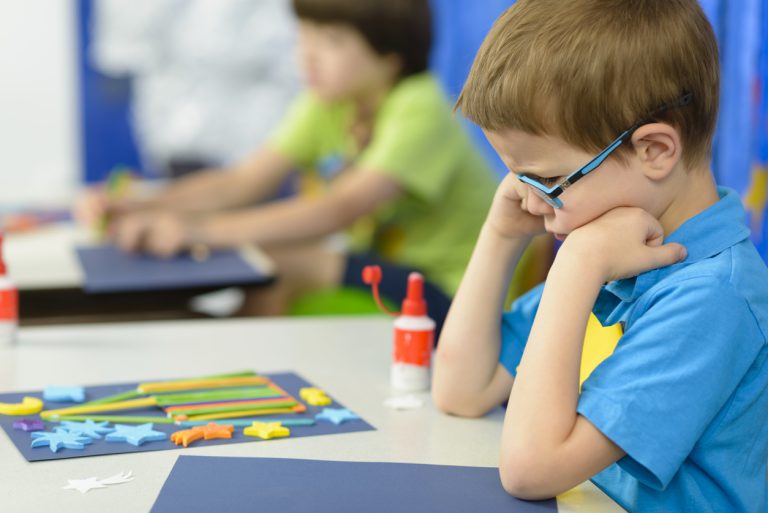By Kim Lawson, Preschool teacher, Bennington Grade School
Orginally published in the Fall 2020 Issue of Kansas Child magazine
Children are not born with the skills to self-regulate. We instinctively help babies soothe by rocking, bouncing, back rubs, and singing. As children grow into toddlers, we assume they can “calm down,” “quit throwing a fit,” or “knock it off” by simply being told to do so. Just like we did when they were babies, we need to continue to help them soothe themselves.
Children lack language and techniques to properly express their emotions. Perhaps the simplest strategy you can teach a child is how to label their feelings. A great way to introduce labeling emotions is through the use of children’s literature.
In almost every one of a child’s favorite books, the main character has some type of problem. Take this opportunity to talk to a child about the character’s feelings. Have children empathize with the character. If the character is scared, have children show their scared face and ask them how this situation would make them feel. While reading, talk about feelings and how children can express their feelings appropriately. Ask them what they would do if they were faced with the same problem. Children will eagerly tell you what the character is doing wrong, then you can use this teachable moment to talk about emotions.
Once they are better equipped to label their feelings, how do we begin to help them cope with these big emotions? First and most importantly we must remain calm ourselves. You have probably heard the quote by L. R. Knost “When little people are overwhelmed by big emotions, it’s our job to share our calm, not join their chaos.” We cannot help children learn to self-regulate if we add our emotions to the mix.
Validate children’s feelings. Say “I understand you are frustrated,” or “I know that you must feel sad.” create a safe space for children to go to process their emotions. Set up a ‘calm-down’ or ‘peace corner’ in your home or child care setting. Design an area that has the specific purpose of self-regulating. This is not a punishment, but instead their very own spot where they can get themselves to a state where they can make better choices.
Give children a choice of things that might help get them learn to cope with their strong feelings and calm themselves down. Provide materials such as: sensory bottles, figits, playdough, stress balls, weighted lap pads, books, or stuffed animals. Model how to use each item before children need a visit to the calm down area.
Once a child learns this is a helpful place, turn and leave them be. Give them a chance to work through big emotions before you talk to them. When they initially go to the peace corner, they are not in the right mind frame to talk. Be patient. This safe space, calm-down center, peace corner, whatever you might end up calling it, will probably not be successful after one visit. It may work one day and not the other. However, with practice and repeated use, children will be able to go find their safe space to self-regulate and eventually get to a point where they can talk about their feelings.
Kim Lawson has a degree in Elementary Education from For Hays State University. She is currently the preschool teacher at Bennington Grade School.
-

Child Care Aware of Kansas
Child Care Aware of Kansas connects everyone with a stake in child care — parents, child care providers, businesses, local and state leaders, and community members — to the information and ideas they need to take action. We provide opportunities, connections, and support for Kansans to envision what a better child care system can look like for them. Working within a network of Child Care Resource & Referral agencies, we also connect caregivers and providers to the information and support they need.






